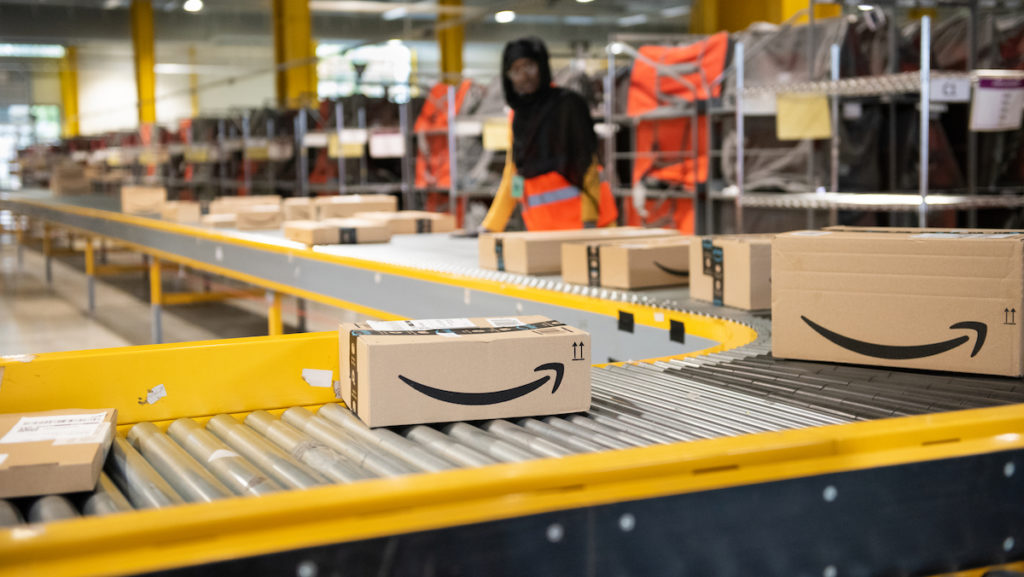They might exist, but I cannot think of a recent or vintage sci-fi movie where religion matters. I do not count the neo-gnostic pagan mysticism of the “Star Wars” franchise.
You are not going to find a futuristic Catholic community in the 28th century, or a Franciscan missionary in A.D. 3076 opening a church in Alpha Centauri, or a person of any specific Christ-centered faith within the borders of any popular science-fiction movie.
Whatever dystopian future science fiction presents seems to take the position that future humans have “grown” beyond “superstition.” The other thing all science-fiction films get wrong is just how the future is going to look.
Stanley Kubrick’s brilliant yet baffling film, “2001,” made in the late 1960s, got a lot wrong. In the real 2001, not only did we not have permanent moon bases, but no country on Earth was capable of human space flight beyond the orbital pull of our home planet. In the film “2001,” the airline Pan Am is imagined to have cornered the commercial space flight market, but in reality, they went belly up by 1991.

The original “Blade Runner,” produced in 1982 but looking into the future of Los Angeles in 2019, shows an overpopulated, perennially raining, gloomy city of not many angels. It’s been 42 years since that film was made, and five years past the future it predicted. Our city may be crowded, but not impossible, and the sun still shines through cleaner skies than it did when I was a kid. And as many demographic indicators suggest, the population threat to the Earth may come from a population implosion rather than the opposite.
“Back to the Future II” was released in 1989 and depicted a future world of 2015. They got the overwhelming descent into sensory override correct, but we are a long way from the flying cars the film envisions.
But then there are the things some science-fiction films got “right.” Taking the example of Kubrick’s “2001” again, the prediction of dependency on artificial intelligence (AI) in the film may not be as overwrought in 2024, but it is certainly on its way. The future that Kubrick envisioned was a world where humanity decreases, and machines ascend. Even when two astronauts in the film identify the threat that their AI “master” HAL has become, their attempts to overcome it are not the stuff of heroism, but more in line with lab rats getting a little revenge, until some unknown alien, neither divine or benevolent, asserts a different kind of dominance over the surviving human.
We may be able to chuckle, or even scoff, at the idea of flying Toyotas, but the AI revolution is no longer a laughing matter. It certainly cannot be all that amusing to the human employees of the mammoth, 3.5-square-mile Amazon fulfillment center in Nashville, Tennessee. According to a recent article, the humans at Amazon have new fellow employees — robots that travel up and down rows and rows of other things people have ordered and assist in lifting and loading the same.
The robots are all called Proteus, which is certainly a moniker worth noting — as it is the name of the Greek mythological god who had the power to see the future, but was not inclined to share it with humans. According to the article, Amazon is willing to share its view of the future, and it is as bright as it appears benign. “Proteus is just so darn cute,” says Julie Mitchell, director of Amazon Robotics, who put to bed any fears the “lovable” yet slightly creepy-looking autonomous mobile robot will one day try to take over the world.
That quote made me think of the 1933 version of “King Kong,” when the New York promoter quiets his anxious audience at their first sight of the 38-foot-tall gorilla, telling them not to worry because the chains that restrain the beast are made of solid steel.
There is plenty of history of humans using technology for less-than-godly things and, in many cases, for objectively evil purposes. This new world racing toward us at the speed of light will certainly outpace our capacity to fully control it and ourselves.
It is beyond just people losing their jobs, as many on the floor at the Amazon fulfillment center are probably worrying about. It is about losing our way. We are the ones made in God’s image, not the machines we build for good or ill. Although it sometimes appears that we are living in a dystopian, nonreligious time, it is comforting to know the Church and God’s presence remain on every corner of the Earth, regardless of how a sci-fi fantasist or even an AI engineer of today may think. And so it shall be until the end of time, just as Jesus said, so maybe there will be a market for plastic Jesus statues you can place on the dashboard of our flying cars when that future finally comes to pass.

